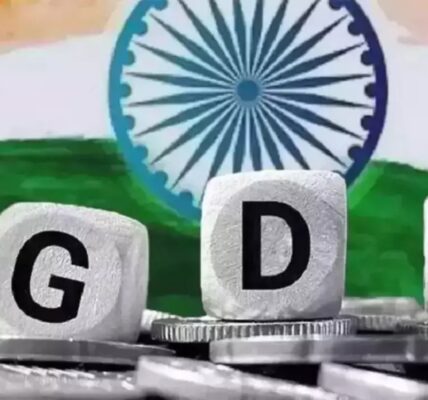The National Treasury projects that public debt will only stabilize in 2028 after peaking at 81.8% of Gross Domestic Product (GDP) in 2027, according to the fiscal projections report released Monday. Despite the deterioration in its forecasts, the Treasury’s outlook remains far more optimistic than the market median, which predicts debt will reach 88.9% of GDP by 2028.
The government’s previous official projection, included in the Budget Guidelines Bill (PLDO), had anticipated that the general government gross debt would stabilize at 79.6% of GDP in 2028. At the end of September, Treasury Secretary Rogério Ceron had already signaled to Valor that the agency’s projections would worsen toward these levels.
According to the report, the general government gross debt is now expected to close this year at 77.7% of GDP, up from the 76.6% forecast in the PLDO sent to Congress in April. By 2028, the Treasury expects the general government gross debt to begin a gradual decline, reaching 75.6% of GDP by 2034. “The general government gross debt/GDP is projected to rise by 3.3 percentage points in 2024 compared to 2023, primarily due to the high level of nominal interest rates, which will continue to exert pressure on the debt in the coming years,” Treasury experts note.
The Treasury emphasizes that “positive primary results and a reduction in the interest-to-GDP ratio will be decisive in ensuring a downward trend in the general government gross debt/GDP in the medium term, as outlined in the reference scenario.”
These projections are based on the “reference scenario,” which assumes adherence to the government’s stated fiscal targets. However, in an “initial scenario”—which excludes revenue-raising measures not yet approved, such as increases to the Social Contribution on Net Profit and the Income Tax on Equity (CJP) rate—the debt would peak at 83.1% of GDP in 2028 and 2029 before beginning to decline in 2030.
The Treasury estimates that a primary surplus equivalent to 0.7% of GDP in 2028 would be sufficient to stabilize the debt at 81.8% of GDP in that year.
Furthermore, the report underscores that for the general government gross debt/GDP to return to 74.4%—its December 2023 level—by 2034, an average primary surplus of 1.3% of GDP would be required between 2025 and 2034. This would demand an even greater fiscal effort than outlined in the current reference scenario.
The government’s official projections remain far more optimistic than the market’s, which does not foresee public debt stabilization in the medium term. According to the Central Bank’s Focus Bulletin, released Monday, the market expects debt to reach 78.3% of GDP by the end of this year. By 2033, economic agents predict the general government gross debt will climb to 93.1% of GDP, significantly higher than the 77.3% forecast by the National Treasury.
“The government’s projections are unrealistic. We’re far from achieving the zero-deficit target next year,” said Felipe Salto, economist and partner at Warren Rena. “And when I say zero, I mean real zero. If we factor in extra tax revenues, court-ordered payments, and the lower fiscal band, the government could still deliver a deficit of up to R$75.1 billion and remain legally compliant,” he added.
The Treasury’s fiscal projections place debt at 79.7% of GDP for 2025, compared to 81.9% in the Focus Bulletin’s median forecast.
“The point is that rebalancing the debt-to-GDP ratio, creating room for a new cycle of interest rate cuts in the medium term, and addressing the current fiscal imbalance must begin immediately,” Mr. Salto stressed. “It will require far more than the current fiscal package, which is already at risk of being watered down in Congress.”
On the primary result side, the Treasury estimates that achieving the center of the 2025 fiscal target will require a fiscal effort of just 0.1% of GDP—roughly R$17.9 billion in additional revenue. However, failure to achieve this effort could jeopardize the 2026 to 2028 targets, with revenue increases of 0.7% of GDP in 2026, 0.8% in 2027, and 1% in 2028 needed to meet the fiscal goals. These percentages reflect gross revenue before transfers to states and municipalities. The Treasury also clarified that its projections for 2025 and 2026 do not account for court-ordered debt payments excluded from the fiscal target, as permitted by the Federal Supreme Court.
The report further forecasts that the spending limit will grow by 2.5% per year in real terms until 2034—the maximum increase allowed under the fiscal framework. This marks an upward revision from the previous report in March, which estimated 2.2% annual growth for the period between 2024 and 2034.
Despite this sustained growth, discretionary spending—non-compulsory expenditures such as investments and operational costs—will face mounting pressure. The Treasury projects that discretionary spending will shrink from 1.7% of GDP in 2024 to 0.9% in 2034, squeezed by rising compulsory expenditures, which will consume nearly the entire spending cap.
The outlook is even more concerning when considering non-rigid discretionary spending, excluding mandatory items like parliamentary amendments and minimum health and education floors. According to the Treasury, fiscal space for these expenditures will virtually vanish by 2032, leaving an estimated R$3 billion. This is due to rigid and mandatory spending absorbing all remaining fiscal capacity.
The flattening of non-rigid spending will become increasingly evident from 2027, when it is projected to fall to just R$70 billion—an amount government experts say is the bare minimum required to maintain essential operations and investments. By 2028, the government is expected to face significant challenges in keeping the government apparatus functioning. In 2033 and 2034, the fiscal space for these expenditures will be completely exhausted.




